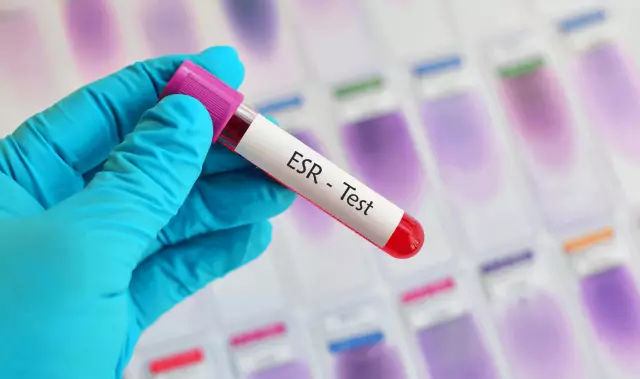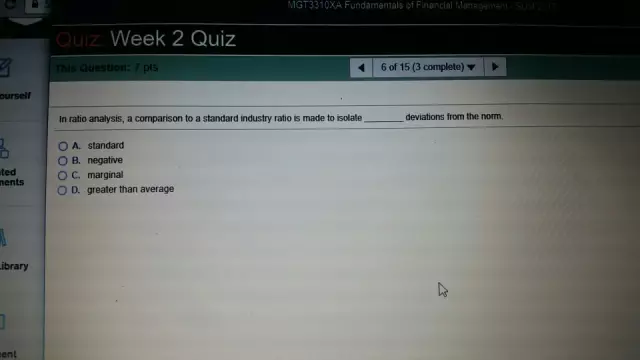- Author Curtis Blomfield [email protected].
- Public 2023-12-16 20:44.
- Last modified 2025-01-23 17:01.
Headache is a symptom that can accompany a large number of pathologies. It can be both short-term and permanent, preventing a person from doing their usual things. With such pain, it is necessary to contact a neurologist to find out the cause of its appearance. Sometimes this symptom warns of dangerous diseases developing in the brain. In some cases, pain is not a sign of severe disorders of the nervous system. To find out the cause of its occurrence, a special study is carried out - echoencephalography of the brain. Thanks to it, you can find out whether a person has structural disorders or not.

Echoencephalography of the brain - what is it?
To assess the state of the brain, various methods of examination are carried out. Among them - X-ray of the skull, computed and magnetic resonance imaging, the study of electrical potentials (EEG). As in many medical fields, neurosciencethe ultrasound method is used. It includes echoencephalography of the brain. In young children, this examination is called neurosonography (NSG). Despite the emergence of new technologies, this method is actively prescribed by doctors. This is due to the fact that echoencephalography is considered a safe and non-invasive study of brain structures. It allows diagnosing many neurological diseases. In addition, it is often combined with a Doppler study of the vessels of the head. Thanks to these methods, it is possible to judge not only the state of the brain, but also its blood supply.

Indications for echoencephalography
This study is quite informative, as it allows you to identify a wide range of neurological pathologies. Echoencephalography of the brain is one of the imaging methods based on the ability to perceive ultrasonic waves. Both neuropathologists and general practitioners can prescribe this study. The indications for EchoEG are the patient's complaints, which may indicate pathologies of the brain. The most common reason for the procedure is headache. In some cases, this symptom rarely bothers the patient and appears only with mental stress or changes in weather conditions. In others, pain haunts a person constantly, making it impossible to work and rest. In both cases, an EchoEG should be performed, since even the rare appearance of symptoms sometimesindicates a severe pathology of the brain. Other indications for ultrasound examination of the head are sleep disturbance, memory disturbance, tinnitus, head bruises.

When is echoencephalography performed on children?
Echoencephalography of the brain in children is one of the best methods of neurological examination. First of all, this is due to the absence of contraindications, as well as the painlessness of the procedure. In addition, EchoEG does not require special training and is an informative method. Indications for its implementation are the same as for adults. In addition, there are other complaints that are usually inherent in the children's population. Among them:
- Stunted growth. The process may be associated with a violation of hormonal regulation, which is carried out in the brain.
- Attention deficit hyperactivity disorder. This disease is psychological in nature, but structural disorders can also be its cause. This syndrome is manifested by disobedience, lack of concentration, academic failure, defiant behavior. Most often diagnosed at the age of 5-8 years.
- Enuresis - nighttime urination.
- When diagnosing hydrocephalus, EchoEG is necessary to assess the severity of the pathology.
Newborns and infants undergo neurosonography. The difference of this study is that it allows you to fully view the structures of the brain. This is ensured due to the fact thatsmall patients have open areas of the skull - fontanelles. Indications for NSG are sleep disturbance, sudden screaming, holding the breath, profuse regurgitation. In general, this study does not differ from echoencephalography. The mechanism of operation of the devices and the technique for performing both methods are identical.

Echoencephalography options
There are 2 types of EchoEG. They have the same readings, but are slightly different from each other. Echoencephalography in M-mode is designed to determine such pathologies as increased intracranial pressure, formation in the brain (cyst, tumor). This method allows you to visualize pathological changes, but does not make it possible to diagnose them with accuracy.
To examine the structures of the brain in more detail, one-dimensional echoencephalography is performed. Doctors recommend this study for suspected intracranial hypertension, hydrocephalus in children. This variant of the procedure makes it possible to evaluate the following parameters: the size of the brain ventricles, the magnitude of the M-echo displacement, ventricular index, etc.

Technique for performing research in children
Parents often ask questions: can echoencephalography of the brain cause side effects in children, where to make an examination is preferable, how to prepare a baby? You should know that this imaging method is completelyharmless. It does not require special training and can be performed at any time of the day. If EchoEG is necessary for a small child, then parents are asked to hold their head in a certain position for several minutes. The study is carried out in 2 stages:
- Transmission. It is performed as follows: 2 sensors are installed on the surface of the head, they must be located along 1 axis from opposite sides. The first probe sends out a sound signal, which is transmitted to the second instrument. Thanks to this, such an indicator as the average line of the head is calculated.
- Emission stage. Further examination is carried out using one sensor, which is installed in the place where the signal is best heard. To examine all the structures, the doctor gradually moves the device over the surface of the head.
What changes can be seen on brain echoencephalography?
Due to the two stages of EchoEG, various brain disorders can be detected. First of all, the doctor determines the midline. Its deviation causes a displacement of structures, as a result of which part of the gray and white matter can be compressed. Only echoencephalography of the brain in children can quickly and safely diagnose this change. The norm of this indicator, however, does not always indicate the absence of diseases.
Therefore, regardless of finding the midline, the doctor proceeds to the second stage. Thanks to it, hydrocephalus can be detected - the appearance of excess fluid in the ventricles of the brain or its membranes. Also by movingthe sensor can detect volumetric formations. The study allows you to evaluate the substance of the brain from both sides. The clearest signal is the sound waves coming from the median structures. These are called M-echoes and are of great diagnostic value.

What diseases can be detected?
Echoencephalography of the brain is prescribed for closed craniocerebral injuries, as well as complaints from the patient or his parents. Through this study, the following violations can be identified:
- Hydrocephalus. This symptom is more common in children but can also occur in adults.
- Increased intracranial pressure. May appear after head trauma, concussion. In some cases, intracranial hypertension has no prerequisites. The main symptoms of this pathology are dizziness, nosebleeds.
- Brain tumors.
- Hematomas.
- Abscesses and cysts located in the substance of the brain.
- Pituitary adenoma.
Combining EchoEG with Doppler sonography can diagnose pathologies such as stroke and dyscirculatory encephalopathy (chronic ischemia).

Echoencephalography of the brain in children: transcript
When reading the results of the study, the M-echo, the initial and final complex are evaluated. Pathological changes are diagnosed when the midline is displaced by more than 2 mm. Allows themdetect echoencephalography of the brain. The interpretation of the results is carried out by a specialist in accordance with the following standards:
- M-echo should be in the middle, ie MD=MS. The splitting of the signal emanating from it indicates intracranial hypertension. The limit of M-echo pulsation normally ranges from 10 to 30%. An increase in this value indicates hypertensive-hydrocephalic syndrome.
- The average selling index is normally 3, 9-4, 1.
- M-echo shift by 5 mm upwards indicates hemorrhagic stroke, downwards indicates ischemia.
- Normally there should be indices of the III ventricle (22-24) and the medial wall (4-5).
Advantages and disadvantages of this study
Like any study, EchoEG has advantages and disadvantages. This method appeared a long time ago, therefore, according to some doctors, it is somewhat outdated. This is due to the large number of new devices for studying the brain, which give a clearer picture of the pathological processes. For example, magnetic resonance imaging allows you to see the tissue in layers and identify the smallest formations. Nevertheless, echoencephalography remains a common diagnostic method, as it has its advantages. First of all, this method is safe. Therefore, it is often prescribed to children and pregnant women. Also, it does not require large costs, special training and time. Thanks to ultrasound, many brain diseases can be excluded.
Patient reviews after echoencephalography
People who have undergone this study can tell in detail what brain echoencephalography means, how this procedure is done and where to go to get a referral. In most cases, reviews of this procedure are positive. Patients note the speed of its implementation, low cost and accurate results.






